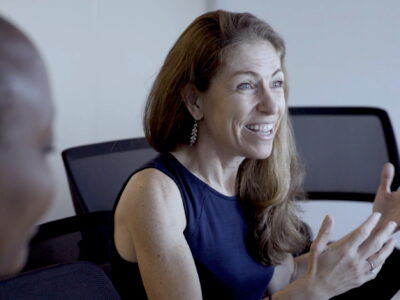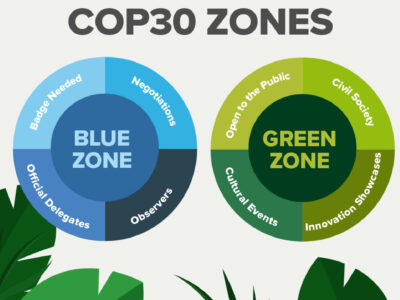By Temma Ehrenfeld
High in the Himalayas, rice farmers and goat herders are working alongside engineers to build new, strong homes and schools—using ordinary soil.
They will help house the thousands of Nepalese still living in makeshift tin shacks and lean-tos after the devastating earthquake in April last year. The quake lasted for 50 hellish seconds, in some areas flattening every village. In Langtang Valley, a loosened block of ice larger than the Empire State Building fell 10,000 feet, burying more than 300 people. At Everest Base Camp, an avalanche triggered by the earthquake gave the mountain its deadliest day. As the country struggled to dig out, a second quake hit two weeks later. All told, the earthquakes killed 8,000 people, and 4 million became homeless.
Within weeks, governments and private groups pledged $4 billion in aid. And something else emerged from the rubble: a grassroots movement to rebuild rural Nepal safely and sustainably.

Kateryna Zemskova is a New Yorker who, like many people, came to love Nepal as a trekker. She flew in within weeks, eager to help. “Wood, stone, mud, brick, cement, it didn’t matter—everything was in ruins,” she reflects. Then came her eureka moment. She heard the word “Earthbag” for the first time by chance and learned that all 55 structures in Nepal made using this method—essentially, assemblages of soil-filled bags bolstered by a few simple architectural techniques—had survived with little damage. The bags are easy to find: They hold rice or cement. The soil can come from any nearby field.
Earthbag technology has been tested around the world, and cuts standard construction costs by almost half. “I discovered that building with local soil meant lower materials costs and less skilled labor,” she said. I also realized the advantages to the environment: no factory-made bricks or blocks, fewer trucks, less fuel.”
Zemskova raised $18,000 from fundraising events in the United States. With around $8,000, she was able to build the first Earthbag house after the quake, a house for a widow, Kamala, and her two young children. “It’s cool in the summer, warm in the winter” and earthquake resistant, Zemskova says. “It’s beautiful, too.” Soon, she says, “we had lines of people asking for help. I was flooded with volunteers.”
Now Good Earth Nepal, a nonprofit she founded with her husband and a friend, has overseen the construction of three schools and 10 private homes. But its main mission is to teach. “Through our workshops and outreach, we aim to create a whole new generation of Earthbag entrepreneurs, she says. “Nepal needs to rebuild itself—we just give people the tools.”
Owen Geiger, a gentle, wispy, bearded figure with a reassuring mid-western drawl, is the world’s leading Earthbag expert. He lives in Thailand, but in September 2015, he came to Kathmandu to train hundreds of Nepalese to build using his method, many of them still living in temporary housing.
At Good Earth Nepal, seven full-time employees run ongoing training programs and supervise construction. The four senior officers are working without salary. This spring and summer, Good Earth Nepal launched a community project in which neighbors built 10 homes together while launching a new training program at an engineering university in India. “Nepal got billions of dollars in aid, but there was almost no construction after the first year,” Zemskova says. “The big organizations got frustrated and left. We’re doing it at the grassroots level.”
In the 1980s, the visionary architect Nader Khalili founded a school of architecture based on the idea that bags filled with earth could create permanent buildings. It grew from the old idea to build temporary walls out of sand bags, usually to stem floods or quickly assemble military bunkers. At a 1984 NASA symposium, while he was brainstorming ways to build shelters on the moon, Khalili imagined filling bags with moon dust. Later, he thought of building homes out of sandbags, or bags of adobe soil, which contains a great deal of clay. In his homeland in Iran, people had been building domes and arches with adobe for centuries.
Then he realized that ordinary soil would do. If the earth is carefully stacked and tamped down, the bags become as hard as concrete in a month or two. Laying barbed wire between the bags provides tensile strength, and serves as the mortar. Coating the walls inside and out with a thin veneer of plaster creates a smooth, pleasing appearance. Properly maintained, an Earthbag structure will stand for generations, perhaps centuries.
Khalili’s disciples built clean, elegant and strong domes. These striking structures became a minor hit among design and architecture aficionados. People have also used Earthbags around the world to make temporary huts, dikes and walls after disasters.
But Earthbag technology didn’t catch on as a permanent solution for villages until now, in Nepal.
Zemskova works closely with villagers long before the first hole is dug and the first bag filled. People will naturally shy away from even the most clever design that doesn’t respect local taste. In Nepal, tradition calls for simple, no-frills buildings, with clean lines and sloping roofs. The new Earthbag homes have blended right in, and demand is growing. Seeing that they are affordable and sturdy, local officials have signed on, as villagers brace for another harsh winter.
Meanwhile, the $4 billion pledged by foreign governments and aid groups has yet to reach most villagers. The government didn’t begin handing out grants until a year after the earthquake, and many families don’t have the required deed of ownership. Few can meet the central government’s expensive new standards for earthquake-resistant buildings, which are based on big-city construction methods.
In Phulping, a remote area near the Chinese border, an elderly villager stands watch over the worksite, witnessing a new school emerge from the ruins of the old. Every day he comes, clad in the same tattered blue vest. “I built the last school,” he says. “This is better.”
The project’s founders will present their work at the International Conference on Sustainable Development, Thursday Sept. 22. This piece is adapted, with permission, from the site Garden Collage. Read the original.
Temma Ehrenfeld is a science writer who ghostwrites books on health and psychology. Reach her at expertediting@rocketmail.com.



